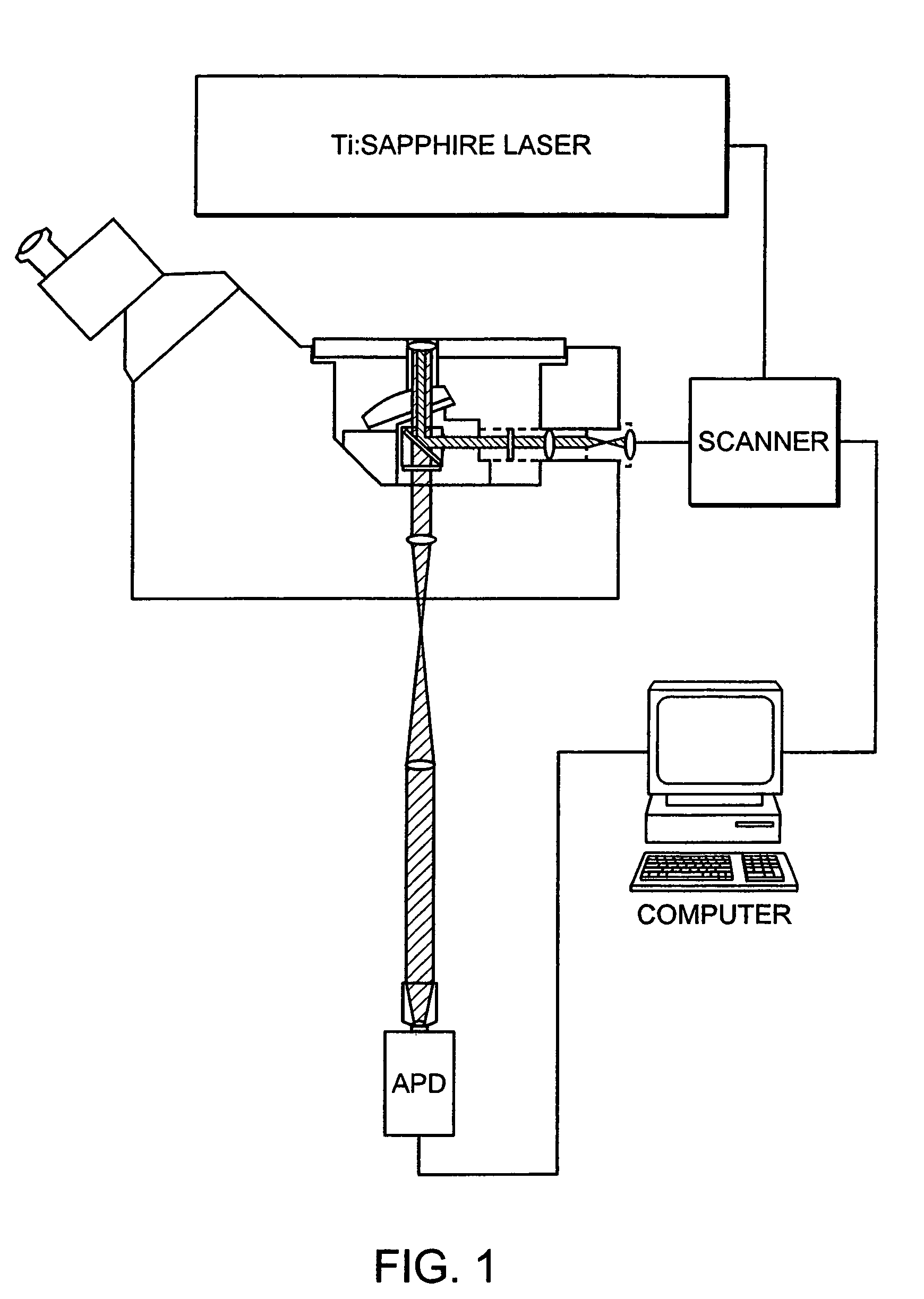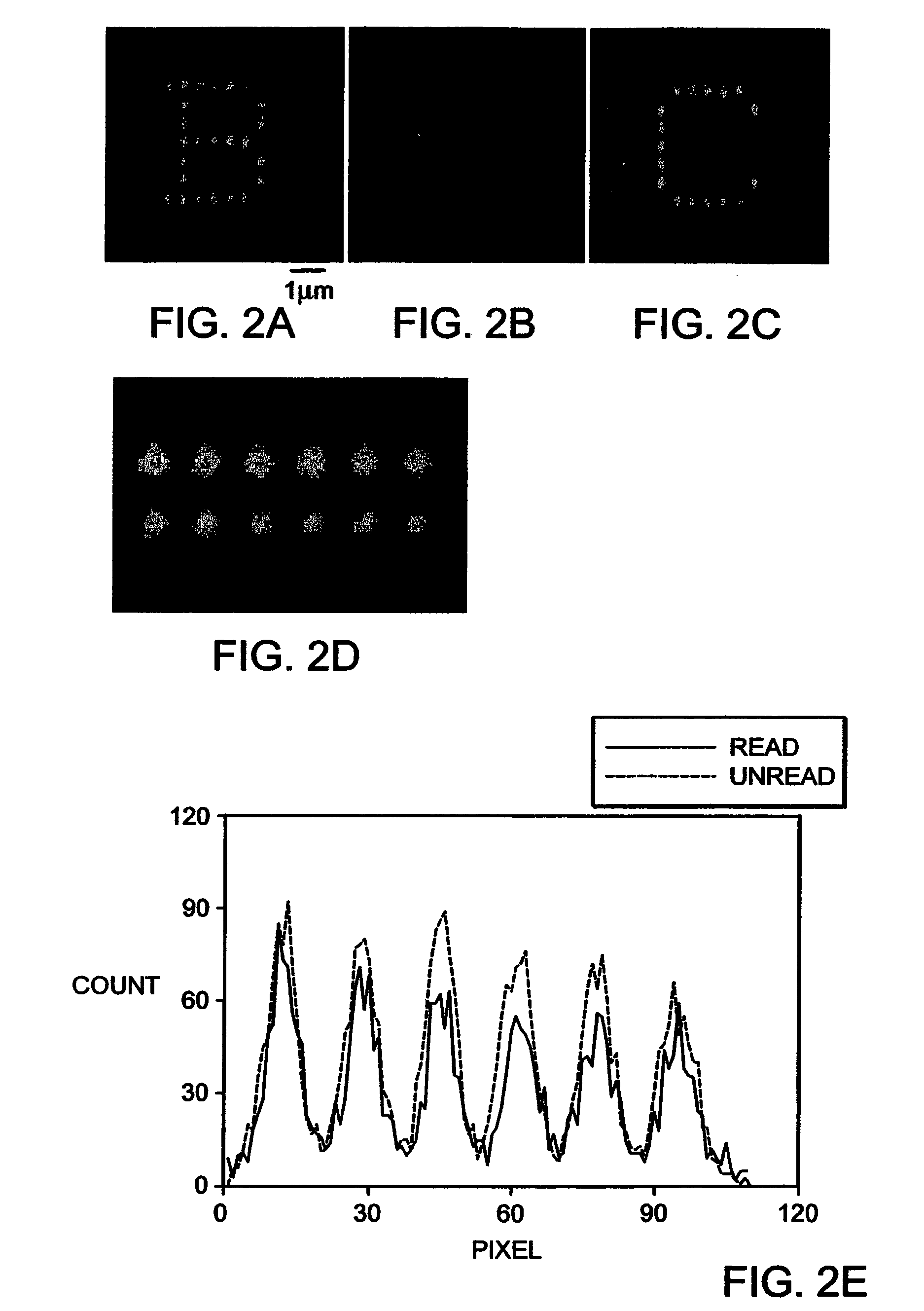Apparatus for three-dimensional optical data storage and retrieval
a three-dimensional optical and data storage technology, applied in the field of three-dimensional optical data storage and retrieval, can solve the problems of not being commercially viable for providing stable 3-d storage media, unable to efficiently read data stored within the media, and limited useful lifetime of two-photon excitation processes relying on fluorescence modulation, etc., to achieve rapid write and read cycles, increase storage density, and fast rate
- Summary
- Abstract
- Description
- Claims
- Application Information
AI Technical Summary
Benefits of technology
Problems solved by technology
Method used
Image
Examples
example 1
General Synthetic Method for Photoactivitable Pthalein Diethers via Dialkyl Sulfates: Preparation of Phenolphthalein Dimethylethers
[0068] A 500-mL round bottom flask was charged with 15.0 grams of phenolphthalein and 200 mL of 10% sodium hydroxide solution. 35 mL of dimethylsulfate was added in 5 mL portions while stirring well between added portions. 10 grams of sodium hydroxide was added. The solution was refluxed while stirring for 1-2 hours at 80-90° C. An oil separated from the solution which became a brown solid upon cooling to room temperature. Vacuum filtration was used to collect the solid. The solid was dissolved in warm ethanol and purified by recrystallization. The recrystallized phenolphthalein dimethylether was analyzed by 1H NMR. The average yield of this synthesis is 80%.
example 2
General Synthetic Method for Photoactivatable Phthalein Diethers via Alkyl Halides: Preparation of Phenolphthalein Dimethylether
[0069] A 500-mL round bottom flask was charged with 5.0 grams of phenolphthalein, 5.0 grams of potassium carbonate, 10-12 mL of iodomethane, and approximately 250 mL of N,N-dimethylformamide (DMF). The solution was refluxed while stirring for 5-6 hours at 70-85° C. Upon cooling, the solution was poured into a 1 L separatory funnel with 100 mL diethylether and 100 mL dilute ammonium chloride. The organic layer from this extraction was added to 150 mL dilute copper sulfate in a separatory funnel. The organic layer was again extracted and 1-2 grams of sodium sulfate was added. This mixture was gravity filtered into a round bottom flask and placed under vacuum to remove the solvent. A highly viscous liquid remained after evaporation of the solvent. This liquid was dissolved in warm ethanol and purified by recrystallization. After recrystallization the phenolp...
example 3
General Synthetic Method for Photoactivatable Bisphenols: Synthesis of Phenolphthalein
[0070] Phenolphthalein is synthesized by standard methods involving a condensation reaction with phthalic anhydride and phenol under appropriate reaction conditions. Substituted phenolpthalein derivatives are obtained from the correspondingly substituted phthalic anhydride and in a similar manner.
PUM
| Property | Measurement | Unit |
|---|---|---|
| center wavelength | aaaaa | aaaaa |
| power | aaaaa | aaaaa |
| temperature | aaaaa | aaaaa |
Abstract
Description
Claims
Application Information
 Login to View More
Login to View More - R&D
- Intellectual Property
- Life Sciences
- Materials
- Tech Scout
- Unparalleled Data Quality
- Higher Quality Content
- 60% Fewer Hallucinations
Browse by: Latest US Patents, China's latest patents, Technical Efficacy Thesaurus, Application Domain, Technology Topic, Popular Technical Reports.
© 2025 PatSnap. All rights reserved.Legal|Privacy policy|Modern Slavery Act Transparency Statement|Sitemap|About US| Contact US: help@patsnap.com



